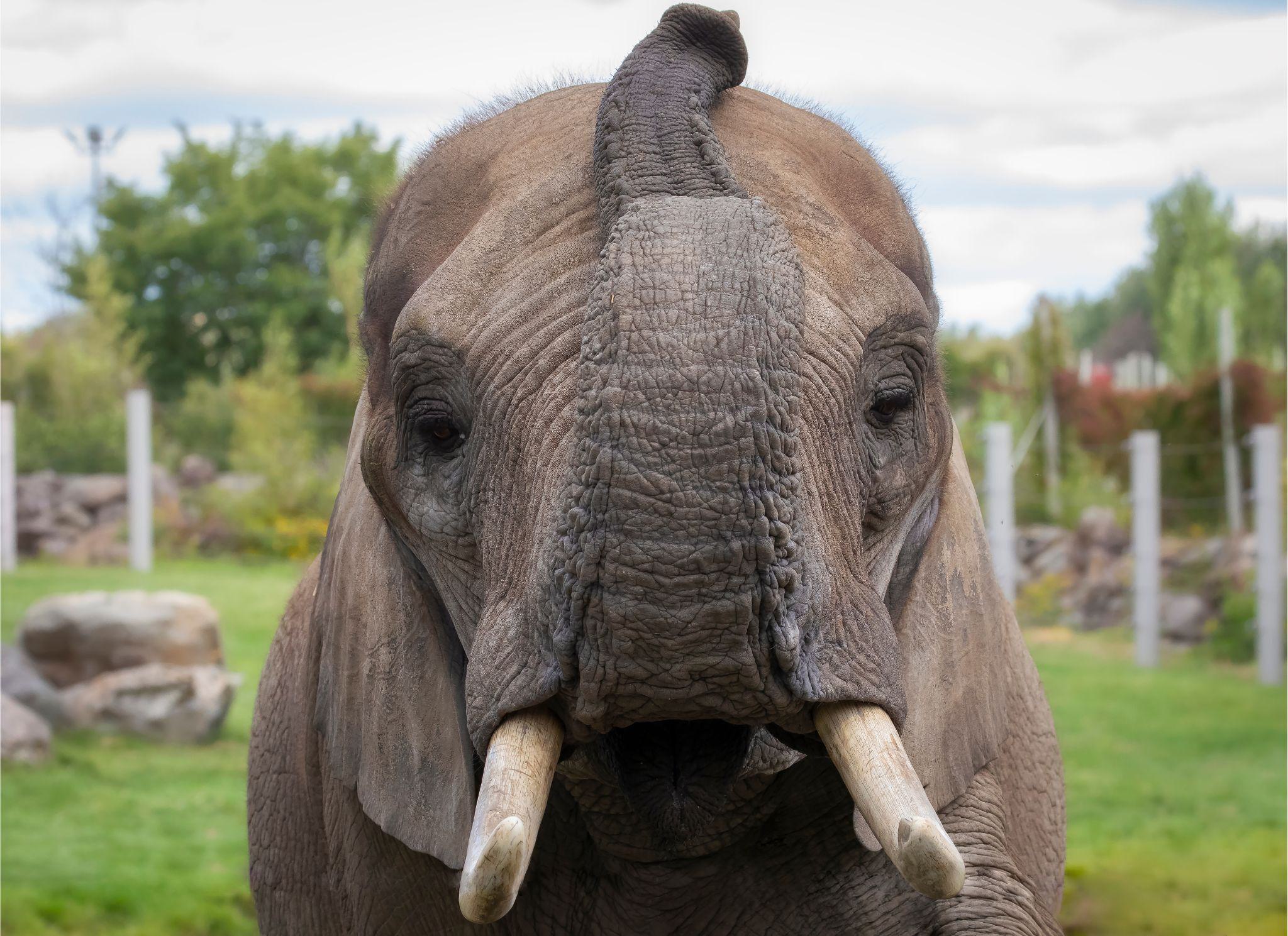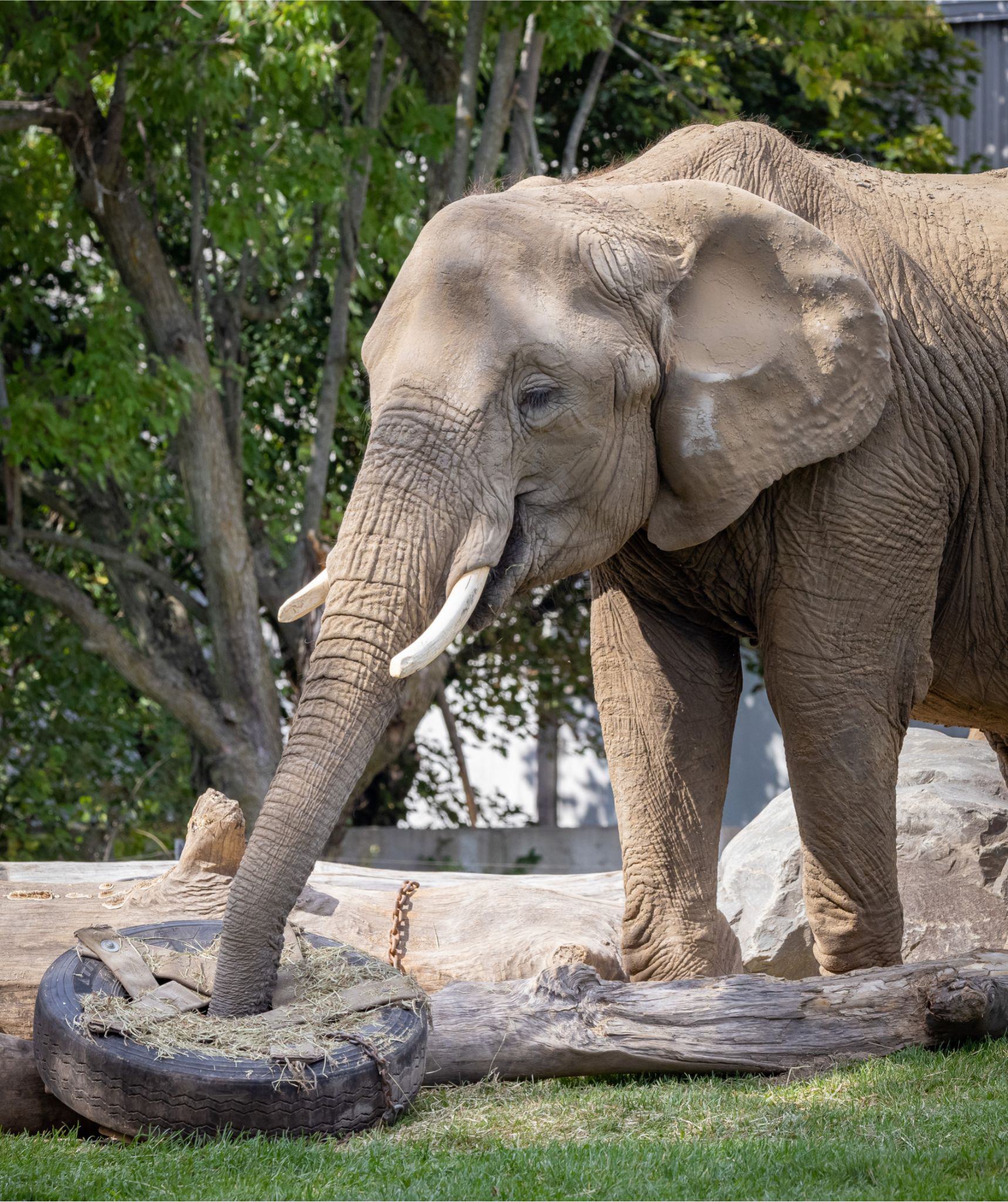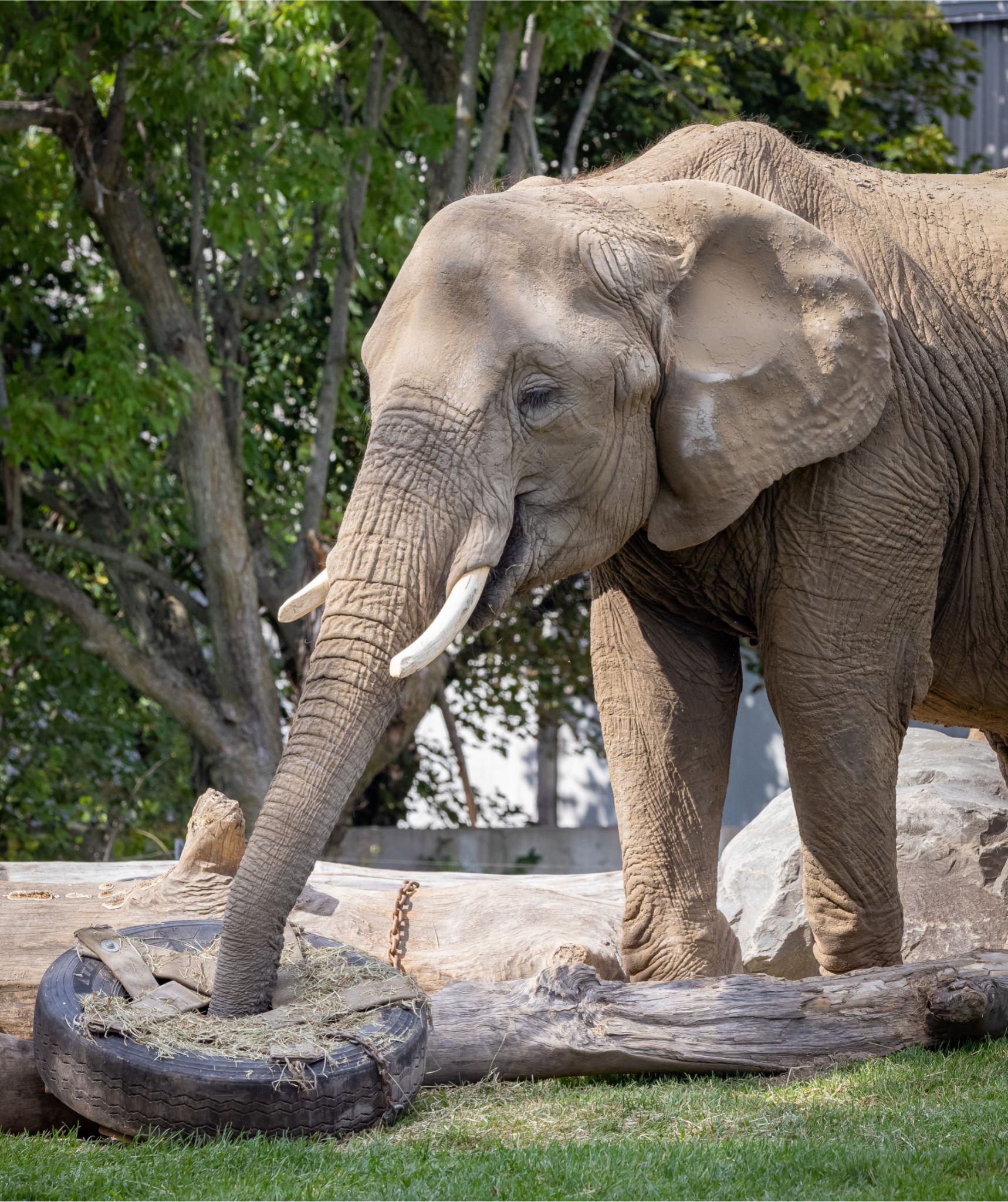
African Elephant
Distribution
Africa
Diet
Herbivore
Habitat
Savannah, Forests
Latin Name
Loxodonta africana
IUCN conservation status
- Extinct
- Critically endangered
- Endangered
- Vulnerable
- Near threatened
- Least concern
Weighing up to 6 tons, they're the largest land mammals in the world.
Interesting informations

A Powerful Trunk Acting as a Hand to Grasp Food
Strict vegetarians, elephants eat plants, foliage, bark, fruit, roots and tubers. They spend most of their day, an average of 14 hours, feeding. They eat between 100 and 300 kg of food every day and drink about 200 litres of water.

A Unique Communication System in the Animal Kingdom
Elephants are characterized by their complex social organization, where communication between individuals is paramount. In addition to acting as a radiator, the large ears are also used to express surprise or anger, among other things. Elephants also communicate with a range of sounds, from infrasound to trumpeting.

Family Groups led by the Matriarch
Related females and their young live in groups of 10 to 25 individuals, guided by the matriarch, the oldest female. She knows the best feeding sites and the location of watering holes. Adult males keep their distance, except during the breeding season.

Hunted for Their Ivory Tusks
While in 1950 their population was numbered at more than 2.5 million, there are now about 400,000 of them left. They're mainly hunted for their ivory, which sells at a high price on the black market. Habitat loss and conflicts with humans, whose crops they sometimes destroy, are also threats to their survival.
Featured animals

Tutume
Date of birth
April 9, 1999
Weight
8978.2 lb / 4 081 kg
Profile
Born in the Berlin Zoo in Germany, Tutume arrived at the Zoo de Granby in 2013 by plane! He's the first male elephant to have become a resident of the Zoo.
Fun fact
When Tutume arrived, he already knew several commands in English, but with a German accent! So our technicians needed to upgrade our giant's training!

Thandi
Date of birth
July 1, 1990
Weight
7 594.4 lb / 3 452 kg
Profile
Thandi arrived at the Zoo de Granby in 2019 from the Pittsburgh Zoo. To recognize her, just look at the tails of our elephants; Thandi's is much longer!
Fun fact
Thandi is rather easygoing with the animal care technicians, but she can be very temperamental with other animals and is not easily imposed upon!

Sarah
Date of birth
September 29, 1983
Weight
7821 lb / 3 555 kg
Profile
Originally from the Jardin des Merveilles in Montréal, Sarah came to the Zoo de Granby in 1988, making her one of our senior residents! She lives with our two other African elephants.
Fun fact
During regular showers and brushing sessions, Sarah often leans on our technicians. Perhaps to let them know that she appreciates being pampered so much!








